Qeshm Island, one of Iran’s most popular and largest islands, shines like a gem in the country’s south due to its natural beauty and historical richness. Its mild and pleasant climate in winter and spring, along with the rich culture of its inhabitants, makes it a prime tourist attraction. Each year, it draws many domestic and international tourists.
Qeshm is nicknamed “The Island of the Seven Wonders” for its diverse and unique nature. Its attractions, like Hara forests, the Valley of Stars, Namakdan Cave, and Chahkooh Canyon, are comparable to the world’s wonders. Planning a visit to these sites depends on your interests and mood. Below, we introduce some of Iran tourist attractions in Qeshm Island.
Bibi Maryam’s Tomb (Tem Seniti)
Bibi Maryam’s Tomb, dating back to the 8th century Hijri lunar, is located in Tem Seniti village on Qeshm Island. This ancient structure is known among the locals as Tem Seniti and is now a tourist attraction. Its architecture resembles that of the Seljuk era.
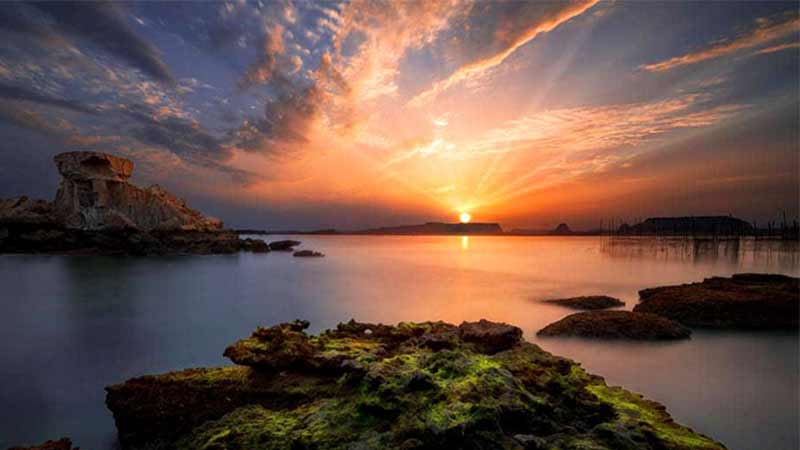
Naz Islands
Among Qeshm’s sights are the Naz Islands, known for their rocky cliffs and about three hectares in size. A unique feature is the ability to drive or walk about a kilometer into these islands during low tide, making them one of Qeshm’s most attractive areas. These uninhabited islands are about 22 kilometers from Qeshm. During low tide, a path appears between the islands and Qeshm’s coast, offering views of the Hormuz Strait and Larak Island.

Qeshm’s Rooftop
Located in the western part of Qeshm, the “Rooftop” consists of elevated areas made of limestone and slopes of sandstone, marl, and silt. These semi-elevated plateaus cover a vast area of the island and offer beautiful views of Hara forests and the northern coasts of the Persian Gulf, making it a natural tourist attraction.
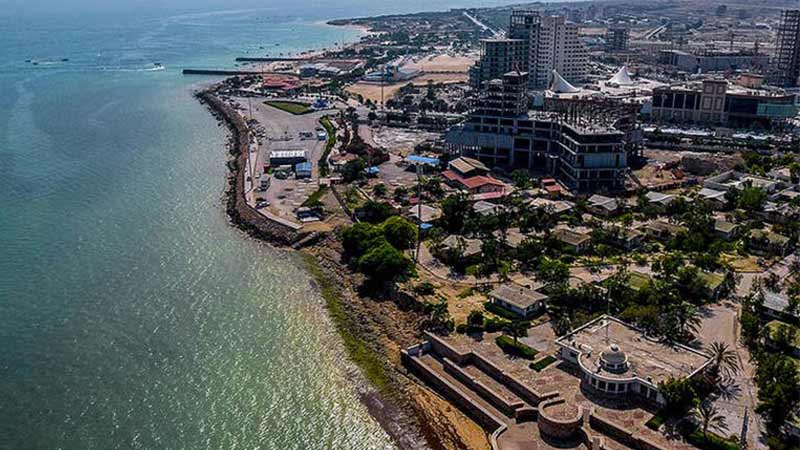
Laft Village and Port
Laft, a historical village in northwest Qeshm, is unique and remarkable. The village is known for its residential houses, each with a central courtyard and windcatchers, earning it the nickname “Port of Windcatchers.” Other historical sites like Naderi Castle, the Portuguese Castle, Mudon Dome, and a cemetery with thousand-year-old inscriptions make it one of the most beautiful tourist destinations in Iran.
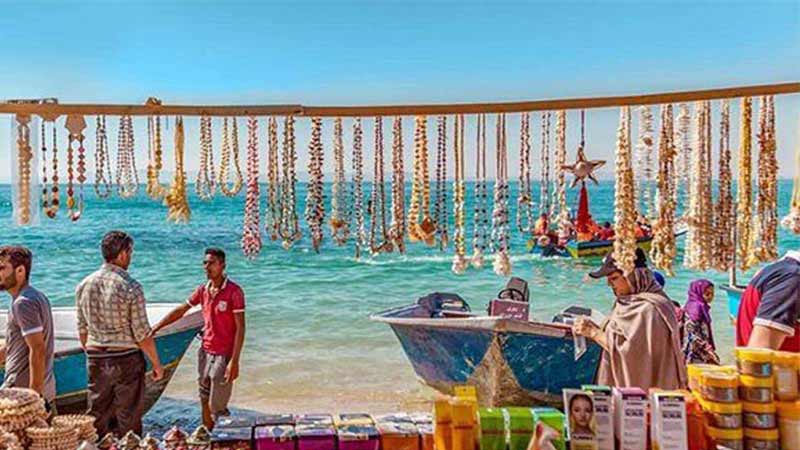
Goran Dam
Located 78 kilometers from Qeshm in Goran village, this dam dates back to the first Pahlavi era. Experts believe its foundation was laid during the Achaemenid era and its crown during the Sassanid era. The dam’s freshwater is highly valued by locals.
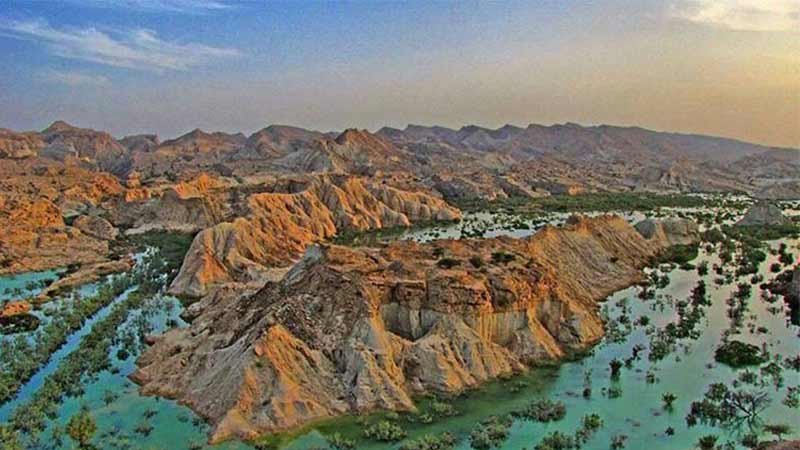
Torian Village
Torian, a village 31 kilometers southwest of Qeshm, is another tourist attraction due to its sunflower fields and numerous palm groves, offering a beautiful and pleasant landscape.
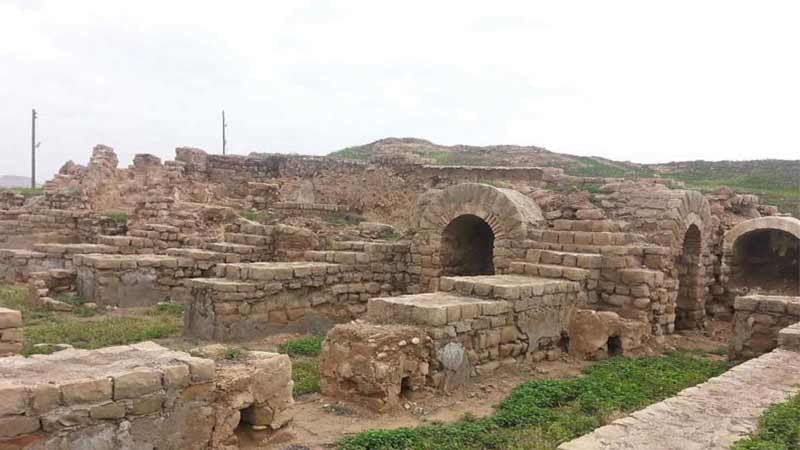
Kaseh Selkh Area
This area, located on the southern coast of Qeshm and known as Kaseh Selkh, spans over 35 square kilometers and lacks vegetation. It’s noteworthy for its therapeutic sulfur spring and thousands of small and large conical hills formed over time through erosion, creating interlaced hillocks.
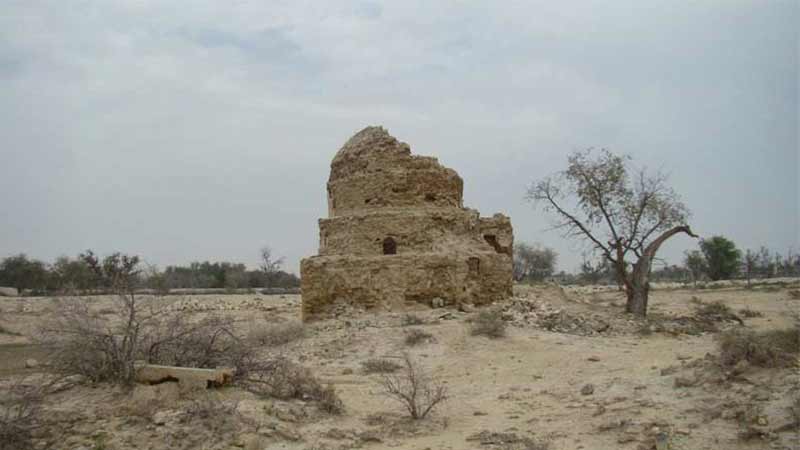
Ali Mohammad Strait
Near Chahkooh Strait on Qeshm Island, you’ll find the beautiful natural phenomenon Ali Mohammad Strait, also known as Abnama and Sangab straits. The end of this natural attraction leads to the salt dome of Namakdan, a sight not to be missed.
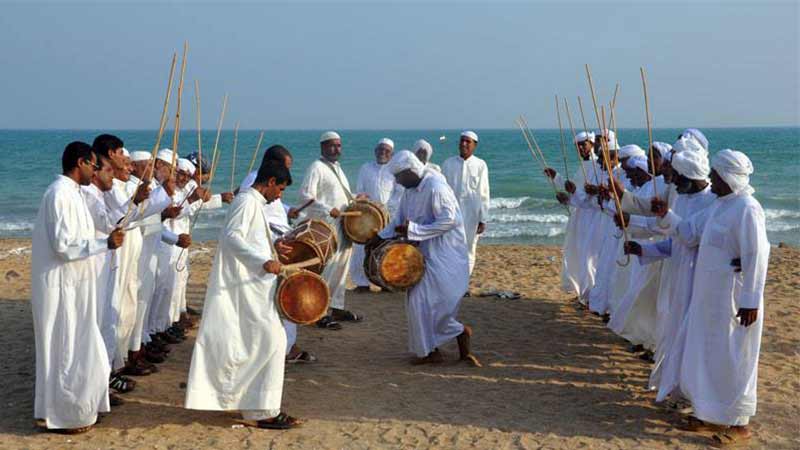
Namakdan Salt Cave, the World’s Longest Salt Cave
Namakdan Salt Cave, introduced by geologists as the world’s longest salt cave, is a beautiful natural phenomenon located 90 kilometers from Qeshm. Situated inside a dome-shaped mountain, you can see white salt streaks on its body and saltwater flowing on its surface. The stalactites formed due to the island’s high humidity and water infiltration inside the cave are stunning.
To visit Namakdan Cave, you’ll pass a highway. There’s about a two-kilometer walk from the road near the coast to the cave’s entrance. The main entrance faces south. You won’t need a flashlight for the first 20 meters, as sunlight covers this distance. Ordinary tourists without proper caving equipment can only go up to 100 meters deep. To explore deeper, you need professional caving gear and skills.
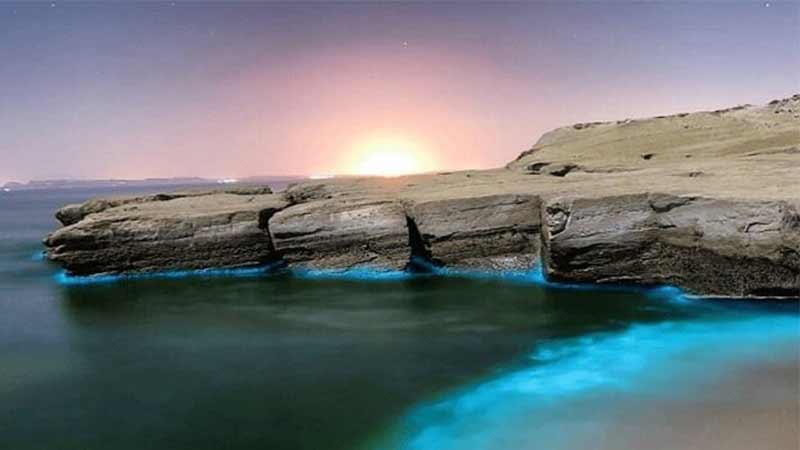
Portuguese Castle
In the early 16th century, a navigator named “Alfonso de Albuquerque” ordered the construction of a fortress in northern Qeshm, now known as the Portuguese Castle. Only a few columns, a water reservoir, and a watchtower remain today.
The castle, spanning over two thousand square meters, was built using local limestone, gypsum, and sarooj. The Portuguese used red soil from Hormuz and incorporated Iranian architecture in its construction.
The castle is located on the coast, a frequent spot for seabirds like fish-eagles and pelicans. You might see these birds up close during your visit.
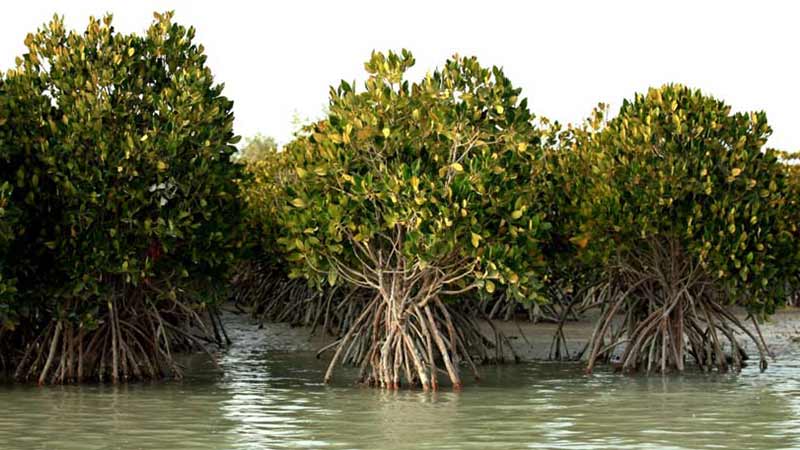
Chahkooh Canyon
70 kilometers from Qeshm, near Chahu-e Sharqi village, lies the intriguing Chahkooh Canyon. It features holes, corridors, and astonishing shapes that are a delight to behold. The canyon is named for the wells dug at its beginning by villagers in the past to collect and store rainwater.
Erosion of sedimentary rocks over time has deepened this valley to 100 meters. The holes, stone textures, and amazing corridors in Chahkooh amaze every visitor.
At the beginning, the path has high walls and a wide route. As you move south, the path narrows to the point where you might lose sight of the sky. The narrow path might make further travel impossible, but it’s an exceptional adventure.
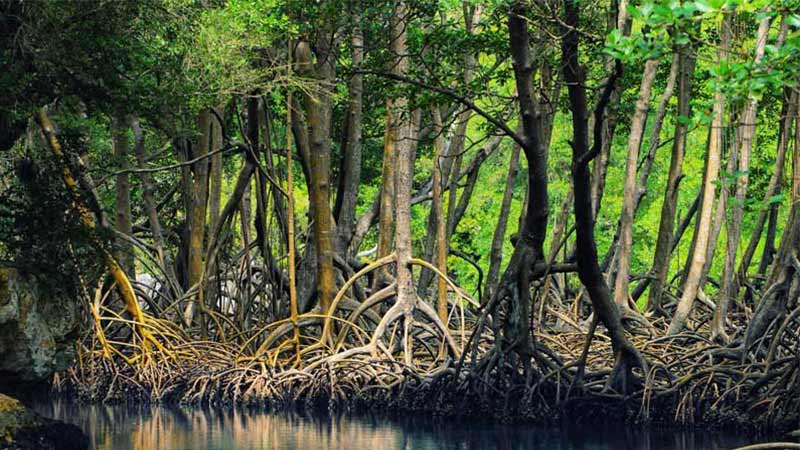
Valley of the Stars
Created through the erosion of soil, rock, and sand by rain, storms, and wind, the Valley of the Stars on Qeshm Island is about two million years old. This natural phenomenon is one of the most famous tourist attractions and is believed by locals to have formed from falling stars, hence its name.

Kharbas Cave
Another natural attraction on Qeshm Island is Kharbas Cave, dating back to the Medes era. It’s 15 kilometers south of the island and formed from the Zagros Mountains’ folding. The cave’s unique and mysterious architecture is striking. Theories about the cave include it being a place of worship for Mithra, a storage site for human bones, and a refuge from pirates.
Hara Mangrove Forests
Certainly, one of Qeshm’s natural and beautiful attractions are its mangrove forests, spanning about 200 kilometers. The trees grow in salty water and submerge up to their necks during high tide. They have the unique ability to purify and sweeten water. You can see these forests, dating back 30 to 40 million years, 60 kilometers west of the island.
The forests are home to migratory birds like flamingos and pelicans, which choose colder seasons for migration. Various reptiles, fish, and turtles also live in these forests. Hara mangrove forests are one the most popular destinations in Iran nature tours.
Boating in Hara Forests
During high tide, when many trees are submerged, an extraordinary scene emerges, as if all the forest trees are floating in water. Boating in the Hara forests is a recreational activity on Qeshm Island, best experienced during high tide. Boating among floating trees in water is a rare experience.
Bibi’s Reservoir
Bibi’s Reservoir, one of Qeshm’s oldest, is over two centuries old and still used by locals. Its architecture is interesting and a tourist attraction on the island.
Historic Cemeteries of Qeshm
Qeshm Island has numerous cemeteries, each with ancient history, reflecting the region’s antiquity. Many graves date back several centuries, such as the Kusheh village cemetery (about 12 centuries old), the Moseni neighborhood cemetery (about five centuries old), Gour-e Farangi cemetery (over four centuries old), Koulgha cemetery, Tourian cemetery (about 10 centuries old), and the Tem Seniti village cemetery (about nine centuries old).

Qeshm Geopark
Qeshm Geopark, located along the Persian Gulf coast and the Hara Sea Forest, includes several important geological phenomena. It was named the first geopark of the Middle East and Iran in 2006 and is part of UNESCO’s Global Geoparks Network. The park, covering 30,000 hectares in the western part of the island, is close to Tabl, Kani, and Gouri villages.
Various plant and animal species, beautiful beaches, natural sculptures and reliefs, amazing mountains, and pillars formed by erosion enhance the area’s appeal. Qeshm Geopark includes 25 tourist sites like the Valley of the Stars, Qeshm’s Rooftop, Chahkooh Canyon, Namakdan Salt Dome, and more.
Other attractions on this beautiful island include Gouri Spring, Kargeh Spring, Qeshm Aquarium, Berkeh Khalaf village, Laft Castle, Quba Mosque, Koulghan Historic Hill, Papeisht Historic Dam, Balatal Dam, Sheikh Borokh’s Mosque and Shrine, Sardar Imam Qoli Khan, and more.
To read more about other Iran natural tourist attractions, visit Parsi Tours blog.



